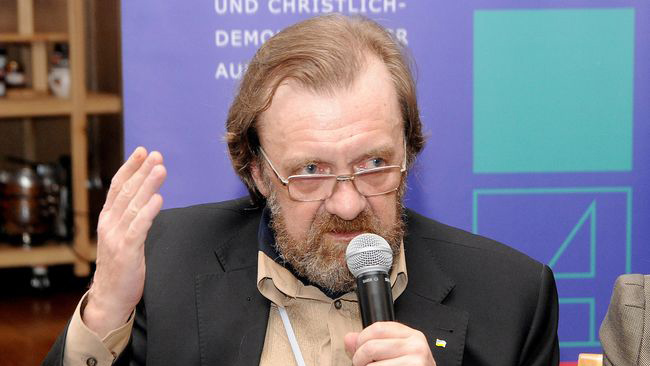What is happening in Crimea
Andrii KLYMENKO: “Many years of development have been reversed in the peninsula, and restoring its potential will take huge investment and effort”
On March 26, the Maidan of Foreign Affairs Foundation and the Black Sea Strategic Studies Institute joined the representative office of the Konrad Adenauer Foundation in Ukraine and the Office of the President of Ukraine in the Autonomous Republic of Crimea to launch the book Captured Crimea under the Sanctions and Blockade in 2014-17, authored by Andrii Klymenko and Tetiana Huchakova. The launch of this comprehensive publication, which describes in detail the situation in the occupied Crimea, became part of the discussion themed “Prospects for the Development of State Policy regarding the Occupied Territories of Ukraine.”
As it is known, while the Russian Federation denies its military presence in the occupied Donbas, the Kremlin openly admits the “illegal appropriation” of Crimea. Nevertheless, after the annexation of the peninsula, the Russian Federation encountered a number of significant issues, which are related not only to the imposition of sanctions. It is explained by the fact that the Russian propaganda-inspired myth claiming that Nikita Khrushchev “presented” the peninsula to Ukraine has come up against concrete realities after the annexation. Firstly, it was not Khrushchev (he was then only one of the members of the Communist party’s Presidium), and it was no present. In 1954, Ukraine received a devastated land from which its indigenous peoples had been expelled. It was the Crimean Tatars who had adapted to survive under saline soil conditions over centuries. Supplying water, electricity, and other necessities became Ukraine’s responsibility after the mid-20th century. In addition, the Ukrainian government did nothing to obstruct the cultural ties between Crimea and the Russian Federation and ensured the return of expellees to their homeland.
What do we have there now? The study does not address the issue of repression and other kinds of legal harassment in Crimea, but it is one of the factors of the current state of the peninsula, its social and legal relations, and therefore requires a separate study.
After the annexation of Crimea, Russia faced the need to establish a transport link with the peninsula. The Russian authorities went for the creation of their own transport communications. At the same time, the Russian Federation tried to use as long as possible Ukrainian resources and transport routes which connect the peninsula with the mainland Ukraine. The study carefully describes the structure of traffic flows. It should be noted that before the occupation, Crimean ports were successfully developing as international passenger terminals and had great prospects before them. Moreover, 2013 was the best in the history of the Crimean ports. Meanwhile, in 2014, the cruise season did not even begin. Catastrophic prospects of the ports are recognized by the occupation government of Crimea as well.
The energy situation in Crimea is just as bad, since its energy system was previously tied to flows from the rest of Ukraine. In 2014, the peninsula provided itself with about 18.5 percent of electricity it needed. In 2016, the Russian Federation intervened in the situation and began supplying Crimea with electricity. Of course, this fact has imposed an additional burden on the Russian budget, especially given that electricity consumption in Crimea is increasing.
Let us turn to gas supply now. According to the report, “the occupied Crimea being cut off from the gas transportation system of Ukraine did not affect the gas supply of the peninsula in the first year of occupation.” The Crimean-born chief editor of the BlackSeaNews project Andrii Klymenko asserted that this was due to the fact that “during the years of Ukraine’s independence, the infrastructure for the extraction, storage, and transportation of natural gas, including from the sea shelf, had been successfully developed in Crimea.” When a shortage of gas appeared in Crimea, the occupiers decided to compensate for it, in particular, by exploiting the Odeske gas field.
The much-discussed theme of the Kerch Bridge construction has many dubious features as well. Essentially, the economic feasibility of such a bridge would be present if it were part of a transport corridor from the EU to the Caucasus and then to Asia. Otherwise, the idea of constructing the Kerch Bridge, which was voiced even before the occupation, is simply unprofitable.
“In general, the socio-economic situation in Crimea after its occupation and illegal annexation by the Russian Federation is characterized by a rapid slide back to the Soviet era,” the authors of the study note. It applies to the sectoral structure of the economy as well as welfare of the population. It is clear from all that for the Russian Federation Crimea has practical value only as a military base enabling its domination in the Black Sea basin. For ordinary citizens, the occupation of the Crimea resulted in wide-ranging losses and problems. Many years of development have been reversed in Crimea, and restoring its potential will take huge investment and effort.
Newspaper output №:
№22, (2018)Section
Topic of the Day





